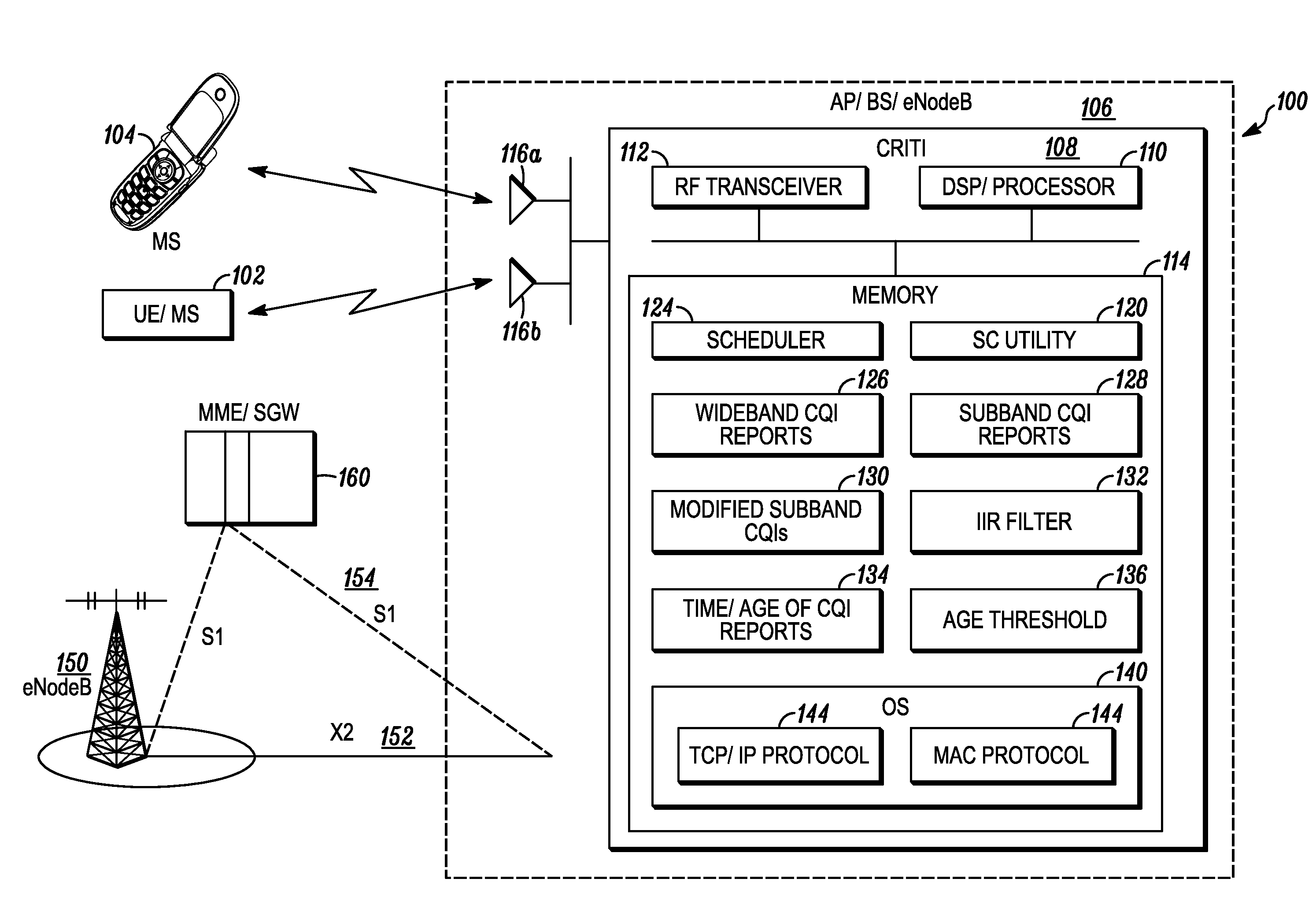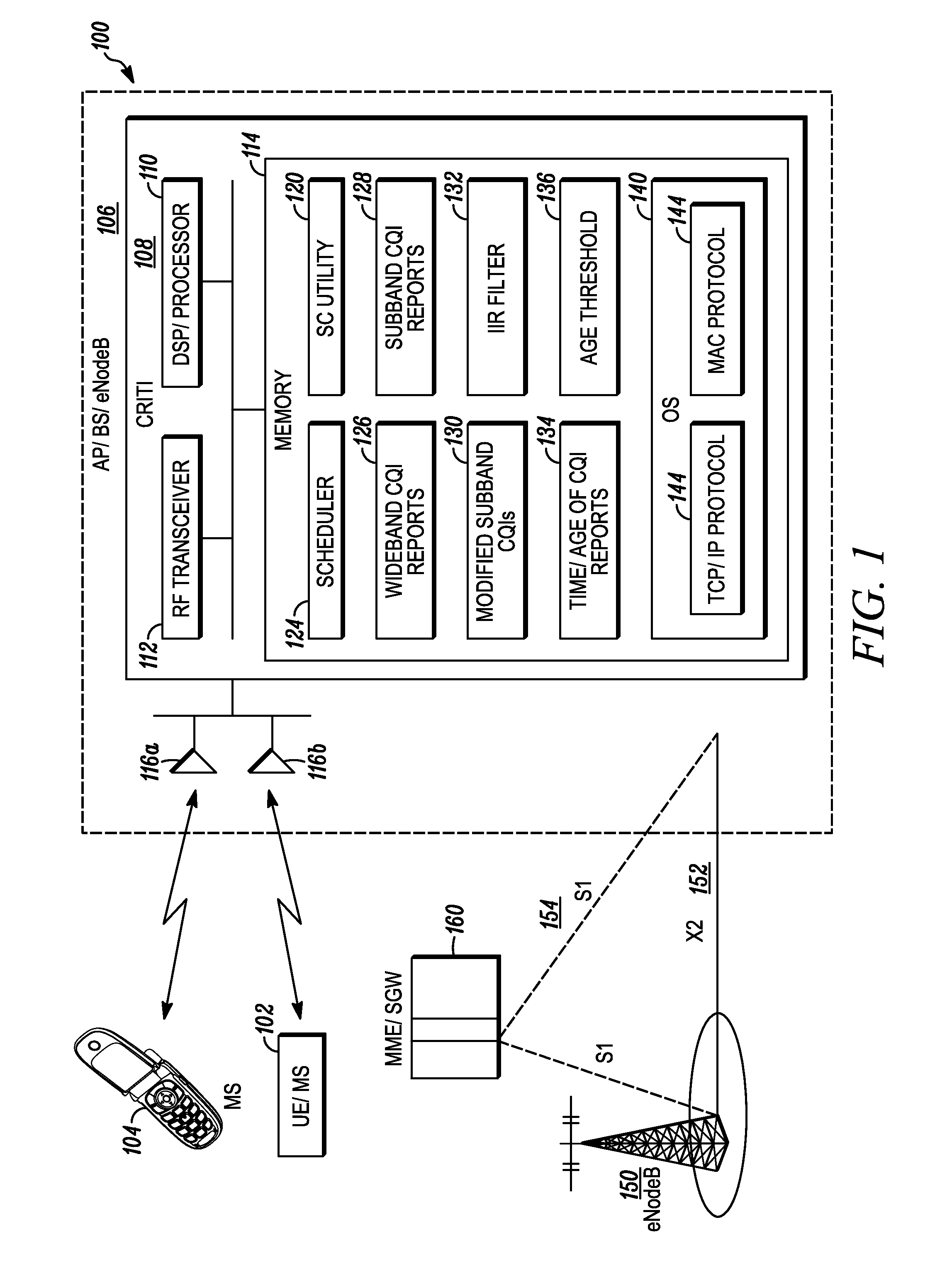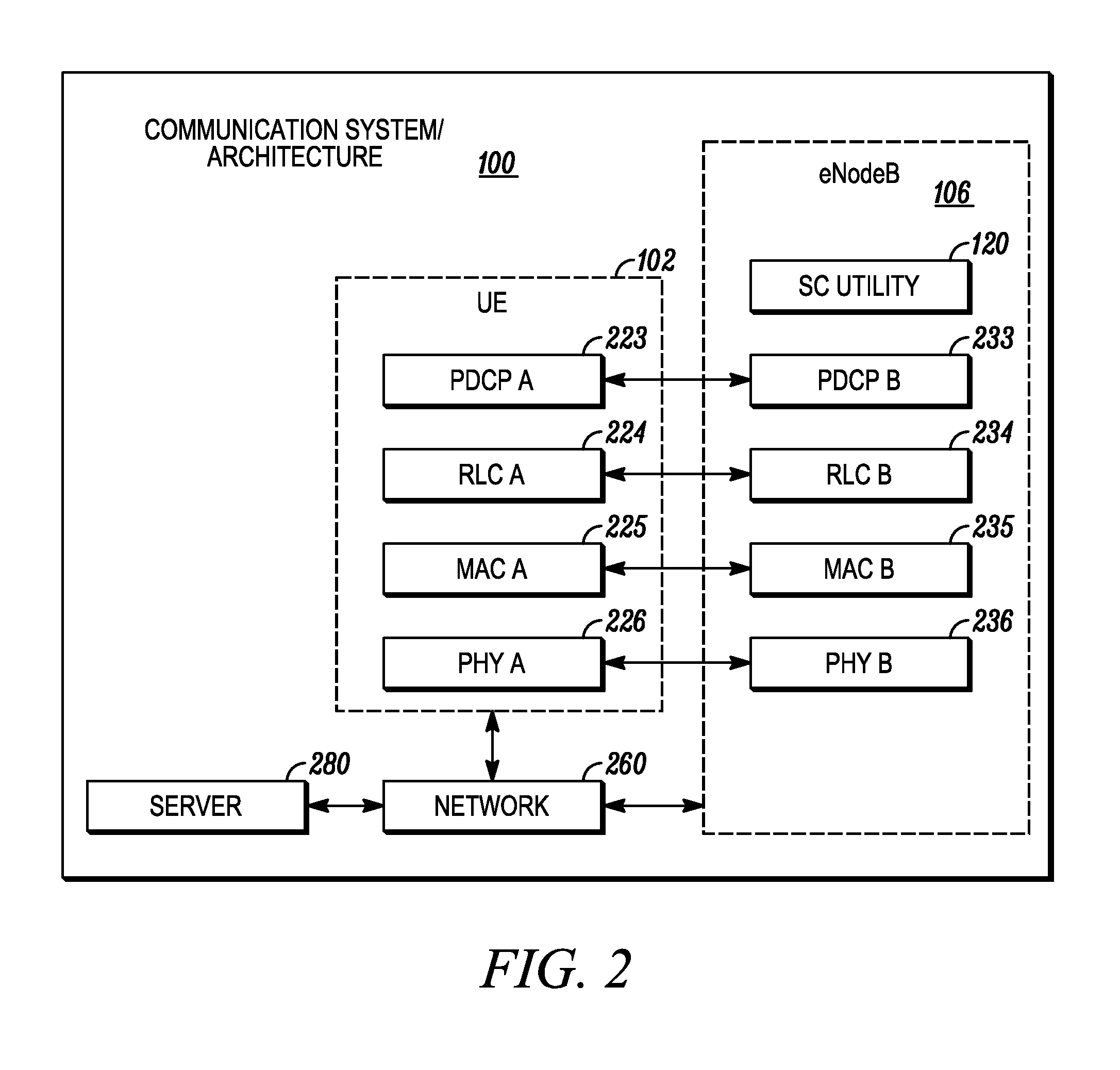Subband snr correction in a frequency selective scheduler
a frequency selective scheduler and subband snr technology, applied in the field of wireless communication system transmission scheduling, can solve problems such as poor scheduler performan
- Summary
- Abstract
- Description
- Claims
- Application Information
AI Technical Summary
Problems solved by technology
Method used
Image
Examples
Embodiment Construction
[0014]The illustrative embodiments provide a method, system, and base station for providing subband signal to noise ratio (SNR) correction in the scheduling of communication resources. A Scheduling Correction (SC) utility executing at the base station receives periodic subband and wideband channel quality indicator (CQI) reports from one or more wireless devices. The SC utility records a subframe reporting period for a respective subband CQI report. The SC utility calculates the age of the subband report to determine whether the subband CQI report remains valid (i.e., whether the report age exceeds the threshold age). If the subband report is invalid, the SC utility utilizes the wideband CQI report for (current) transmission scheduling. However, if the subband CQI report is valid, the SC utility: (a) utilizes the subband CQI report for transmission scheduling from the most current reporting subframe or (b) utilizes a modified subband CQI value with a correction that utilizes the wid...
PUM
 Login to View More
Login to View More Abstract
Description
Claims
Application Information
 Login to View More
Login to View More - R&D
- Intellectual Property
- Life Sciences
- Materials
- Tech Scout
- Unparalleled Data Quality
- Higher Quality Content
- 60% Fewer Hallucinations
Browse by: Latest US Patents, China's latest patents, Technical Efficacy Thesaurus, Application Domain, Technology Topic, Popular Technical Reports.
© 2025 PatSnap. All rights reserved.Legal|Privacy policy|Modern Slavery Act Transparency Statement|Sitemap|About US| Contact US: help@patsnap.com



